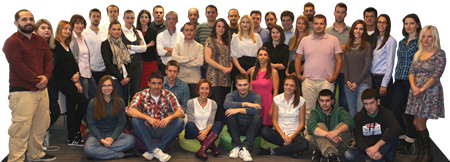Red-Color News Soldier (Kulturna revolucija)
| Cena: |
| Želi ovaj predmet: | 2 |
| Stanje: | Nekorišćen |
| Garancija: | Ne |
| Isporuka: | Pošta CC paket (Pošta) Post Express Lično preuzimanje |
| Plaćanje: | Tekući račun (pre slanja) Lično |
| Grad: |
Novi Sad, Novi Sad |
ISBN: Ostalo
Godina izdanja: 2003
Jezik: Engleski
Autor: Strani
U dobrom/vrlo dobrom stanju
Nekorišćena, samo se po papirnom omotu vidi da je duže stajala na polici
Red-Color News Soldier (PHOTOGRAPHY)
by Li Zhensheng (Author)
Publisher : Phaidon Press; Csm edition (October 1, 2003)
Language : English
Paperback : 316 pages
Item Weight : 2.56 pounds
Dimensions : 8 x 1.25 x 10.38 inches
Red-Color News Soldier (PHOTOGRAPHY) Paperback – Bargain Price, October 1, 2003
This is the first visual history of China`s Cultural Revolution (1966-1976) and includes the only complete set of surviving photographs to document the entire period. It is drawn from thousands of original negatives that were hidden for nearly 40 years by photographer Li Zhensheng, at great personal risk, and accompanied by his own personal story. Zhensheng brings to light in this historical record one of the most turbulent, controversial, and under-documented periods in modern history.
The project to bring Li Zhensheng’s photographs of the Cultural Revolution to the wider world was first conceived fifteen years ago in Beijing. It was there, at the Chinese Press Association`s photography competition in March 1988, that Li first publicly exhibited twenty images from his “negative” negatives – that is, those which had been deemed counterrevolutionary under the political dictates of Chairman Mao Zedong. The affect of the exhibit, entitled “Let History Tell the Future”—which included pictures of the former governor of Heilongjiang Province having his hair brutally torn out at a Red Guard rally—was seismic, and Chinese Communist Party-controlled newspapers for the first time were heard to use the term, “shocked.”
In December of that same year, Li met Robert Pledge, director of Contact Press Images, the international photo agency, who was in Beijing on the occasion of the seminal exhibition: “Contact: Photojournalism Since Vietnam” held at the National Museum of History at Tiananmen Square, one of the first contemporary western photography exhibits on the mainland, which was attended by over 10,000 a day during a ten-day period. There, Li and Pledge quickly determined to work together to someday bring out Li’s work. Politically, though, the climate would have to be right.
The book is divided into five historical chapters. Each is preceded by Li`s personal account for the corresponding period of times and is illustrated with pictures of himself and historical documents. Each chapter is accompanied with general background text and detailed captions exist for each photograph.
I.
1964-1966 `It is Right to Rebel`: Prelude to the Cultural Revolution
II.
1966 `Bombard the Headquarters`
III.
1966-1968 `The Red Sun in Our Hearts`
IV.
1968-1972 `Revolution is Not a Dinner Party`
V.
1972-1976 `Die Fighting`
Epilogue
1980: The execution of Wang Shouxin
****
PREFACE
Red-Color News Soldier is the literal translation of the four Chinese characters print-ed on the armband first given to Li Zhensheng and his rebel group in Beijing at the end of 1966, eight months after the launch of the Great Proletarian Cultural Révolution. There are other, more fluent translations, but none retains the musicality of the four character words brought together.
For a long time in the Western world, Mao Zedong and the Cultural Révolution were perceived with amazement and fascination; only very rarely with horror. In the late 1960s and early 1970s, rioting students around the world were inspired by the finger-pointing, slogan-shouting style of the Red Guards, and Andy Warhol in New York was producing his renowned silk-screen paintings of Mao, the “Great Helmsman.` Even today, ail the chaos of that period can seem somewhat roman-tic and idealistic in comparison with the contemporary Chinese society we see and hear about.
With this in mind, it was necessary to produce a clearer and more truthful image of the turmoil that turned China upsidedown during the Cultural Révolution. Li Zhensheng was the one person who, through his exceptional photographie legacy, could convey this truth on the printed page. A few guidelines were established up-front with Li’s agreement: none of the photographs would be cropped; the images would be presented in the most accurate chronological order possible so as to best depict the historical process; and précisé captions would accompany the images, with facts verified through additional research and double-checked against the archives of the Heilongjiang Daily, where Li worked for eighteen years.
Over a period of several years, Li delivered to the offices of Contact Press Images in New York approximately thirty-thousand small brown paper envelopes bound together with rubber bands in groups according to chronology, location, type of film, or other criteria that changed over time. Each envelope contained a single négative inside a glassine pouch. Some of these had not been removed since Li had eut them from their original négative strips and hidden them away thirty-five years earlier. On each envelope Li had written detailed captions in délicate Chinese calligraphy. Communes and counties, people’s names, official titles, and spécifie events were ail carefully noted. Yet as Li’s written account clearly demonstrates, his memory of the period is still clear and detailed.
For three years, from 2000 to 2003, a small group including Li, translator Rong Jiang, writer Jacques Menasche, and I (and later to be joined by Li’s daughter Xiaobing) met nearly every Sunday to collectively piece together this history of a largely unknown era. In these exhausting and, at times, animated sessions, we pored over a variety of archivai and scholarly documents, conduct-ed interviews, reviewed images, and even listened to Li sing revolutionary songs from the time.
During the period of the Cultural Révolution the whole of China became a theater in which the audience was increasingly part of the play—from the poorest peasant attending a `struggle session` to the `class enemy` forced to bow at the waist in humiliation; from the rarely seen leader waving from a Jeep to the denounced and the denouncers...
kulturna revolucija, cultural revolution, mao, china, kina
L_I_Č_N_O______P_R_E_U_Z_I_M_A_NJ_E_:
Za kupovine ukupne vrednosti preko 2.000 dinara moguće lično preuzimanje u Puškinovoj u Novom Sadu. Ako je za pojedinačnu knjigu navedena samo opcija Pošta, lično preuzimanje samo te knjige nije moguće. U Novom Sadu moguća je lična dostava i plaćanje preko službe Eko-kurir (cena je 250-300 din).
STANJE KNJIGE:
Knjiga koju dobijate je ona koja je na slici. Ukoliko nije naznačeno da je knjiga nova ili nekorišćena, ponekad se desi da na predlistu stoji potpis, posveta ili pečat i da to nije navedeno u opisu. Ako vam takve stvari smetaju, pitajte me pre kupovine da proverim.
KOMUNIKACIJA:
Komunikacija ide isključivo preko Kupindo poruka, ne telefonom. Budite normalni.
POPUSTI, CENKANJE I SL.:
Cena je ta koja piše, molim vas da mi ne šaljete pitanja o poslednjoj i zadnjoj ceni niti svoje kontraponude.
SLANJE:
Knjige šaljem kao tiskovinu ili CC paket nakon uplate na račun. Pakujem ih bezbedno i pažljivo, dobijate ih u stanju u kojem su poslate. Poštarina za jednu pošiljku obično iznosi od 190 do 260 din, u zavisnosti od težine. To je poštarina za tiskovinu, CC paket je skuplji, post ekspres je najskuplji. Za četiri i više pojedinačno kupljenih knjiga (u to ne spadaju kompleti) ja snosim troškove poštarine. Potrebno je da uplatite/preuzmete knjigu u propisanom roku od 7 dana.
SUSEDNE ZEMLJE I INOSTRANSTVO:
Poštarina je za jednu knjigu visoka i okvirno se kreće od 10-15 eur za prvu i oko 7 eura za svaku dodatnu knjigu. Postoji mogućnost znatno isplativijeg slanja za teže pakete. Uplate PayPalom (+10%), direktno na devizni račun, Western Union ili Moneygram. Najbolje je da pre kupovine pitate koliki su troškovi dostave, jer su često veći od cene same knjige.
INTERNATIONAL ORDERS:
I will send abroad. For your calculation, one hundred dinars roughly equals $1. Please register here:
https://www.limundo.com/Registracija/Kupindo
and then PM me on the link below for postage costs (they usually start at around 15 euro for the first book and 7 euro for each additional one)
https://www.kupindo.com/Clan/ndi/PostaviPitanje
MOJA PONUDA:
Nove knjige postavljam gotovo svaki dan. Možete ih pratiti na ovom linku http://www.limundo.com/Clan/ndi (pritisnite dugme `Prati`)
¤¤¤¤¤¤¤¤¤¤¤¤¤¤¤¤¤¤¤¤¤¤¤¤¤¤¤¤¤¤¤¤¤¤¤¤¤¤¤¤¤¤¤¤¤¤¤¤¤¤¤¤¤¤¤¤¤¤¤¤¤¤¤¤¤¤¤¤¤¤¤¤¤¤¤¤¤¤¤¤¤¤¤¤
Predmet: 65666025









